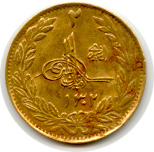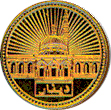Speaking at the launch, Umar Ibrahim Vadillo, Pioneer of the Dinar’s
reintroduction and director of E-Dinar Ltd, underlined several aspects
of the coin’s importance.
He pointed out that according to the well-established Fiqh, Zakat,
one of the five pillars of Islam, cannot be paid using a promissory
note, which is a distorted derivative of a debt to another party. Zakat
must be discharged using gold, silver or certain categories of tangible
merchandise. Vadillo highlighted Zakat’s importance in the Deen, stating
that changing its basic rules was similar to changing the basic rules
of the Prayer.
He quoted the Fatwa of Shaykh Muhammad ‘Illish (1802-1881) in which
the great Maliki Qadi states that paper money is only to be assessed
for the purposes of Zakat according to its value as tangible material
— i.e. paper, by weight.
Sidi Umar Vadillo went on to assert that the Islamic Gold Dinar is
a symbol of the unity of the Ummah, and that its reintroduction is indispensable
for the reunification of the Muslim world. In this he echoed recent
statements by Malaysia’s prime minister Dr Mahathir Mohammed in support
of an Islamic Trading Bloc with the Gold Dinar as currency. In June
Mahathir had said to the Al Baraka Symposium of Islamic Economies in
Kuala Lumpur, "Effectively the use of the Islamic dinar will create
an Islamic trading bloc […] the international Islamic Dinar is quite
achievable and can be the beginning of a closer economic co-operation
between the Muslim countries.
Other voices have called for a retrieval of the Gold Dinar as the Muslim
currency, particularly with the with the gradual exposure of the real
nature of ‘Islamic banking’ entities as being in fact a repackaging
of the same banking instruments that are used world-wide for the expropriation
of wealth and debt-control on every social level and scale. Imad-ad-Deen
Ahmad of the Minaret of Freedom Institute in 1998 delivered a lecture
to the American Muslim Social Scientists in Chicago in which he stated,
"Muslims cannot escape the fact that gold is our money. Even if we pretend
that it is not, we continue to use it in calculating the nisâb. Instead
of fighting the will of Allah, I propose that we embrace it."
 THE GOLD DINAR RESEARCH GROUP
THE GOLD DINAR RESEARCH GROUP 